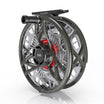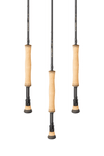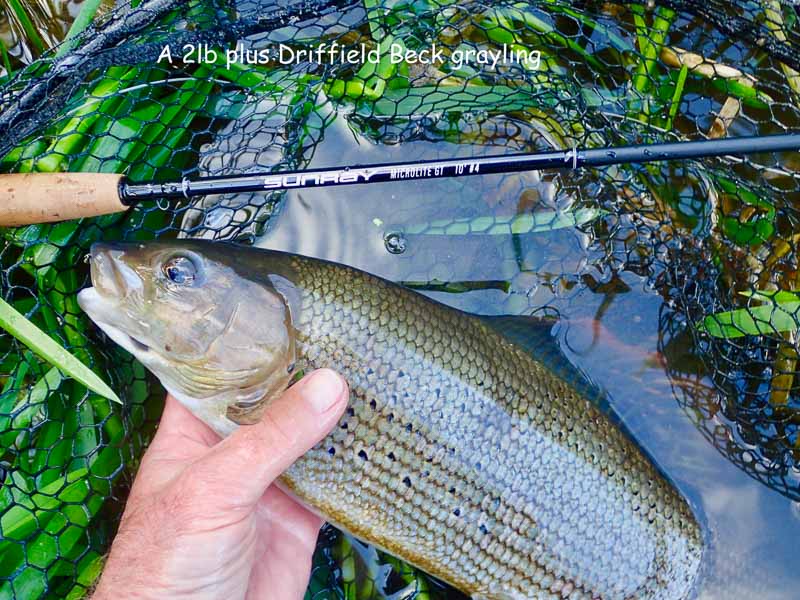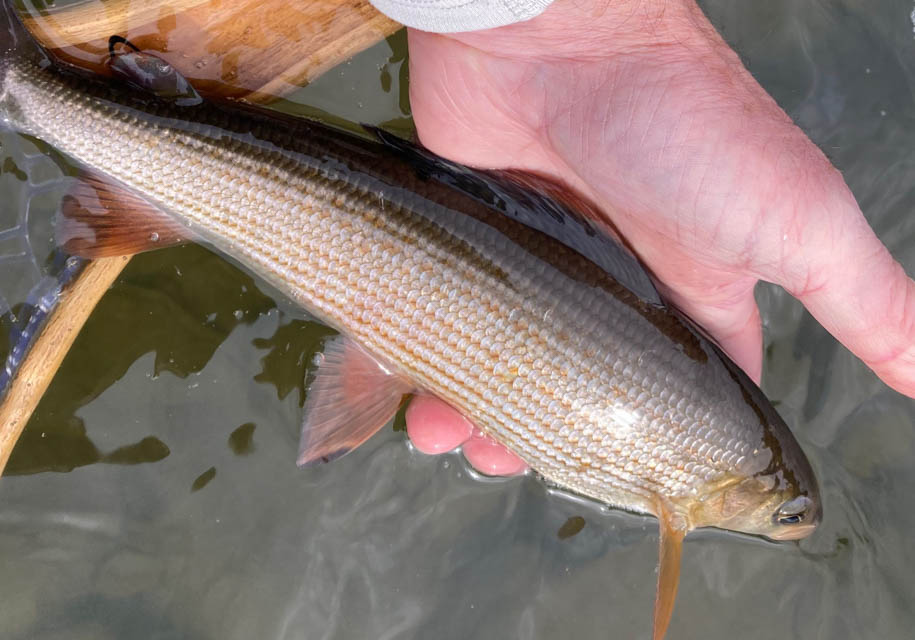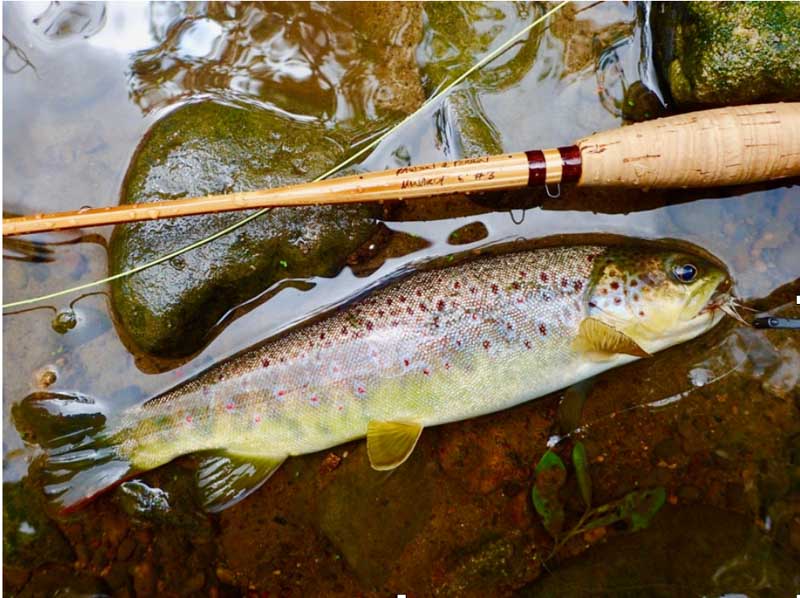by David Southall
Dry Fly Fishing for Grayling
The trout season is over so I have to target other species with my fly rod. Grayling are my favourite species of fish & my preferred method of fishing is dry fly. However I am well aware that on most waters the bigger grayling are usually reticent to rise to a dry fly, feeding predominantly on or near to the river bed, particularly in the depths of winter. I am lucky to live within a few miles of Driffield Beck in East Yorkshire, one of the UK’s most northerly chalk streams; as a result much of my fishing is sight-fishing with Shrimp & Nymph imitations, plus Grayling Bugs. Because of very heavy cormorant predation the number of grayling in the beck is very low so a lot of my time is spent searching for the few survivors.
Once located it is a case of finding them when they are on the feed, since as a result of the huge populations of Gammarus/Shrimps & other aquatic invertebrates, much of the time they are unresponsive. Once feeding grayling have been located it is a case of deciding on the most effective tactics (sight-fishing, Euro-nymphing or suspending a fly under an indicator). Whenever possible I will sight-fish since many takes are never registered on an indicator, the fish inhaling & ejecting the fly virtually instantly, often too fast for an effective stike to be made even when the take is clearly seen. However, in poor light conditions I will use an indicator, generally a semi-curly tricoloured monofilament indicator. Fly choice is the next thing. I find that grayling are far less predictable than trout. One day a bight Pink Shrimp will elicit a positive response, yet at other times a tiny Black-bead Pheasant Tail Nymph will be what they want. The table below shows the flies that have accounted for my big Driffield Beck grayling. Be aware that this may be a reflection of how frequently I use these patterns.
September 2007 to 14 October 2022 Driffield Beck Grayling Captures
|
Fly/Bait |
2lb to 2lb 15oz grayling |
3lb to 3lb 8oz grayling |
|
Red Maggots |
12 |
1 |
|
Bead-head Partridge & Hare’s Ear Spider |
9 |
3 |
|
Bill Eadie Grayling Slayer |
11 |
|
|
Orange Utah Killer Bug variant |
10 |
|
|
Black-bead Quill Nymph (size 16 to 20) |
7 |
|
|
UVSP Shrimp |
4 |
2 |
|
20 to 26 Buzzer Pupa |
6 |
|
|
Pink Shrimp |
2 |
1 |
|
Copper Bead-head PT Flashback Nymph |
2 |
1 |
|
Orange Shrimp |
3 |
|
|
Peeping Caddis |
2 |
|
|
Elk Hair Caddis |
2 |
|
|
22 Bloodworm |
2 |
|
|
Sparkle-braid Bloodworm |
|
1 |
|
Black & Red Wire Perdigon Nymph |
1 |
|
|
Black-bead Shammy Leather Bug |
1 |
|
|
Electric Blush Nymph Skin Bug |
1 |
|
|
Yellow Catgut Caddis Pupa/Larva |
1 |
|
|
Elk Hair Caddis |
1 |
|
|
TOTAL |
77 |
9 |
Shrimp fly pattern for Grayling Fishing in Winter
One thing that I do find is that, once a fish or two have been caught on it, a shoal of grayling soon learns that a certain fly pattern is not ‘good’. A classic case occurred on the 15th of October 2022. After unsuccessfully targeting two small shoals of grayling I finally located one in which the fish were grubbing on the river bed & occasionally taking food from the drift. Fairly quickly I caught two fish on a size 16 Grayling Slayer, after which my fly was ignored. A change to a Pink Shrimp also elicited no response from fish that were clearly still feeding. Three fish fell to a size 16 Orange Utah Killer Bug before it too became ineffective. My final three fish took a size 18 Copper-bead Flash-back Pheasant Tail Nymph. Final tally 8 grayling with 5 over 1lb 8oz & topped by a monster of 2lb 15oz.
Presentation is another critical factor in achieving success & grayling are just as unpredictable with respect to this. Sometimes they want a fly ‘on the drop’ & often they will travel quite a distance to take a fly as it slowly sinks. So there are times that it doesn’t pay to fish a fast-sinking, heavily weighted fly. At other times a ‘dead drift’ will be the only way to tempt them. At such times the best presentation can be achieved by suspending the nymph/bug/shrimp under an indicator, or if using a short line technique (Czech nymphing or Tenkara), by holding the fly, under tension, at a set level throughout the drift. There are, however, many times when life-like movement needs to be applied to the fly in order to induce a take. Whilst short-line Euronymphing many takes come at the end of the drift, when the line comes tight downstream making the weighted flies lift up & across the flow. When sight-fishing I often subtly lift my fly as it approaches the target fish.
So what about dry fly? There are many waters where grayling, even the big ones, are free rising, for example when there is a hatch of Olives, Midges & Sedges, a fall of terrestrials such as Aphids or spent small Stoneflies. I’ve caught 2lb plus grayling on dry flies from the Welsh Dee, Slovenia’s Unica River, Italy’s Boite River & Austria’s Finkausee. Most have been caught on tiny CdC dry flies, size 24 IOBO Humpies. Whilst probably the best times for dry fly fishing are Autumn, when aphids are dislodged from fallen leaves & early March when Large Dark Olives are emerging, I have had superb sport with size 26 to 30 CdC Midges during December, January & February on Yorkshire’s Industrial Rivers, so don’t discount the use of dry flies in Winter. On the 6th of January 2022 there was a brief hatch of Blue-winged Olives on Driffield Beck during which I landed two medium sized grayling & lost one well over 2lb on a size 20 CdC IOBO Humpy.
I find that drag-free presentation of my dry flies is absolutely essential for success. The slightest trace of micro-drag results in aborted takes. Furthermore, whilst grayling will often move good distances to take a sub-surface fly they rarely seem to be prepared to move more than a very short distance for a dry fly, so hyper accurate casting is usually required. To achieve a drag-free drift requires a combination of long, supple tippets, suitable casting techniques such as Reach Casts & a variety of Slack-line Casts, plus luck. Fishing at very close range such that the minimum of line is on the water helps considerably. Also, when fishing with sub size 20 flies I often tie them into a Rapala Loop Knot helps them to move more independently of the relatively stiff tippet.
My favourite setups are as follows:

For Euronymphing I love the Sunray Volition 10’ 2 weight (now superseeded by the Microlite GT 10’ 2 weight or possibly even better the 10’ 6” 3 weight), teamed up with a Micro Nymph line to which I attach a 7’ tapered section tapering from 0.43mm to 0.20mm, at the end of which is a small Perfection Loop to which I can attach a semi-curly tricoloured indicator & tippet (or if fish are rising I remove the indicator & attach 5’ of tippet). Mnay folks would advocate using a monofilament French Leader, but my setup allows me to fish a dry fly effectively if I see rising fish.

For Dry Fly, New Zealand Wool Indicator Nymphing & Sight Nymphing my choice is the 10’ 4 weight Microlite GT rod with a 1 to 3 weight Jeremy Lucas line (line weight depending on wind strength) & a 7’ tapered section (as above) plus 3 to 7’ of tippet. On the rare occasions that I use my old 3 weight Double Taper line I have a 12’ tapered leader section from 0.45mm to 0.20mm plus 5 to 7’ of tippet.
The PATTERNS
Grayling Slayer
Hook: Jig size 18 to 12
Thread: Tan or orange 8/0
Bead: Copper Slotted Tungsten or Jig Off
Body: Dubbed Squirrel
Rib: Pearl mylar
Collar: Orange Ice Dub
Orange Utah Killer Bug
Hook: size 18 to 10 Grub
Thread: Orange Globrite Floss
Underbody: 1 or 2 layers of lead wire covered with the orange floss
Overbody: 1 layer of Jamieson’s Spindrift Shetland wool, Oyster colour

Flash-back Pheasant Tail Nymph
Hook: Jig size 20 to 14
Thread: Red 8/0
Bead: 2mm to 4mm Slotted Copper Tungsten or Jig Off
Tails: 5 or 6 CdC fibres
Body: 2 or 3 Cock pheasant tail fibres
Rib: Red wire
Collar: Black or peacock Ice Dub

IOBO Humpy
Hook: Size 20 dry fly, Size 24 Tiemco 2488 or size 26 to 30 Gamakatsu C12 BM
Thread: Tan 8/0
Wing, tails & back: 2 CdC feather tips (just 1 for sizes 26 to 30)
Tie with tips extending about two shank lengths back over the bend. Wind thread to behind the eye over the feather butts & trim. Pull the feather tips forward leaving a few fibres as tails. Post the tips up with thread turns & whip finish.






